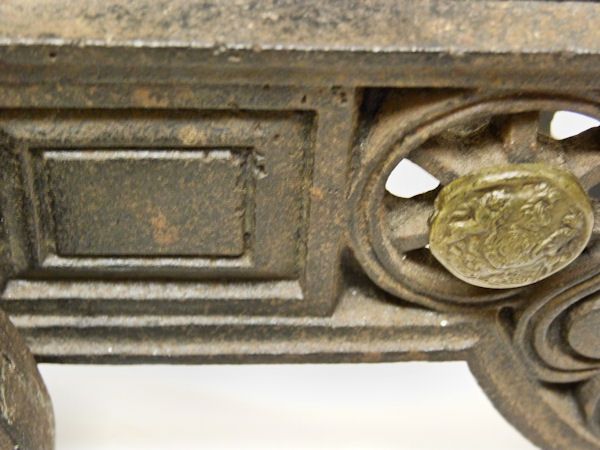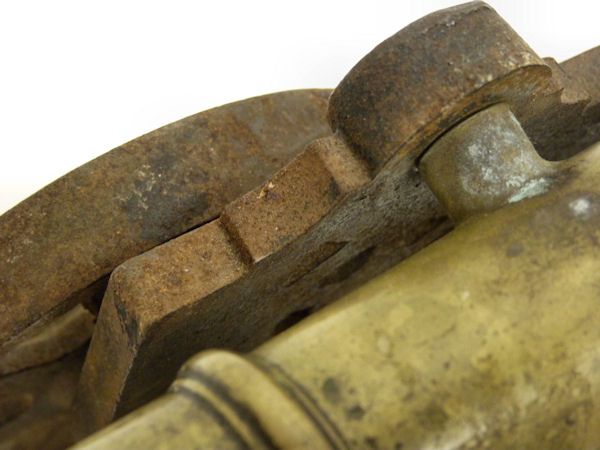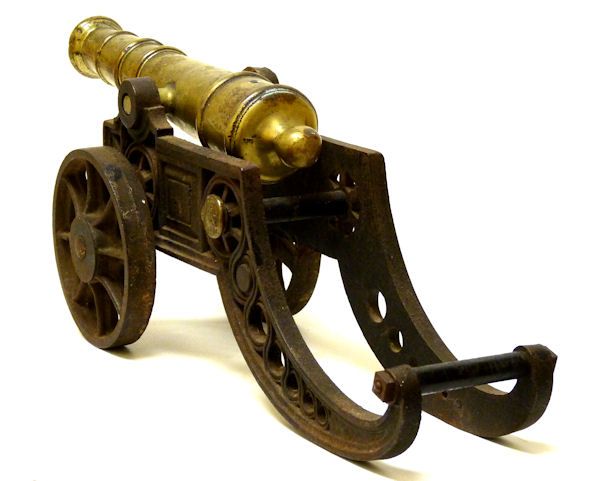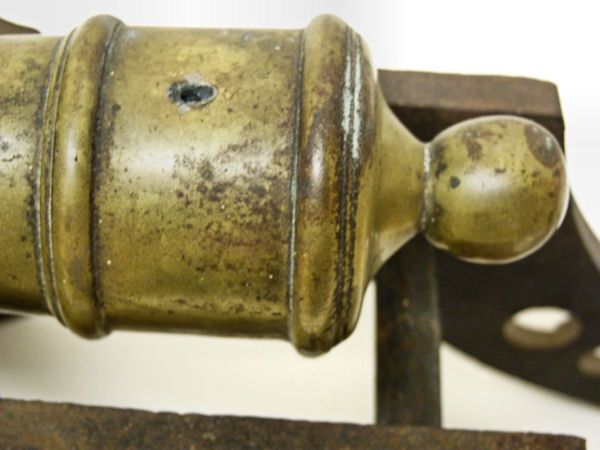WITH BRONZE BARREL VICTORIAN SIGNAL CANNON
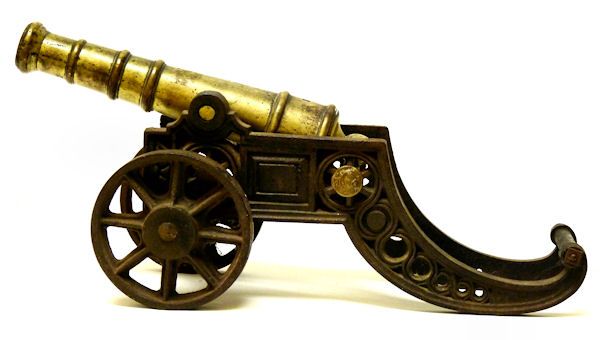
Century signal cannon with a bronze barrel and cast iron carriage. It likely was made in England under the reign
of Queen Victoria. There is a cap with a royal crown on the left side of the carriage covering a nut. It is just to the left
and below the cascabal on the carriage, which supports our conclusion of its date. Its proportions are typical of a British
field gun, and it is fitted to its original cast iron carriage. Note the touch
hole and the smoke residue at the bore showing that it has been fired.
should be made to fire it without it first being inspected by a gunsmith.
Signal cannons were used aboard ship and ashore to make salutes,
to warn of danger, and to attract attention in the case of an emergency. They were also used to start yacht races. These cannons
were generally cast in the style of the period to which they belong.NUTS AND BOLTS: There is common misconception that square
and hexagon nuts and bolts were not invented and used until sometime after 1908. That is plain wrong. There are numerous references
to square headed and hexagon headed bolts being used in ship construction in the 1860’s, and being used in the fastening of
armor much earlier. The most authoritative statement exists in Encyclopedia Britannica’s Article 39228 which is quoted here:“Metal screws and nuts appeared
in the 15th century. The square or hexagonal head or nut was turned with an appropriate
box wrench; a T-handled socket wrench was developed in the 16th century. Some screws
used in 16th-century armour have slots (nicks) in which a screwdriver may have been used, although this tool is not shown.
Deep notches on the circumferences of the heads of other armour screws suggest that some type of pronged device was used to
turn them. Slotted, roundheaded screws were used in the 16th century, but few screw-and-nut-fastened clocks are in evidence
earlier than the 17th century. Metal screws were called machine or machinery screws since they were made of metal and mated
with threaded holes.”
We are conservatively estimating its age as at least 150 years, but it could be earlier.
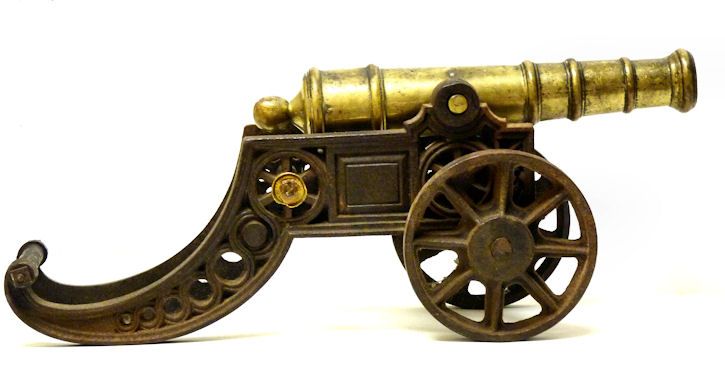
CONDITION: The cannon was painted black,
but much of the coating has been lost to rust which adds a pleasing look of age. The barrel shows some dents and casting imperfections,
but appears sound. Because of its age it should not be fired without a gunsmith’s inspection. The trunnions are cast
as part of the barrel which is customary and the trunnion caps are part of the carriage. There are no mold marks or inscriptions.
There is a cap over a nut missing on the right side of the carriageDIMENSIONS:Bronze
Cannon 18″ Length overall Length of carriage 15″Length
barrel 11 1/2″
Bore 3/4″Width
of barrel at bore 1 5/8″
Width at last reinforcing band 2 1/2″Width at wheels 5 1/2″
Weight of cannon 15
1/2 pounds
|
|
|
|
SHIPPING & INSURED PACKING by FedEx Ground to the 48 contiguous States, $35.00
